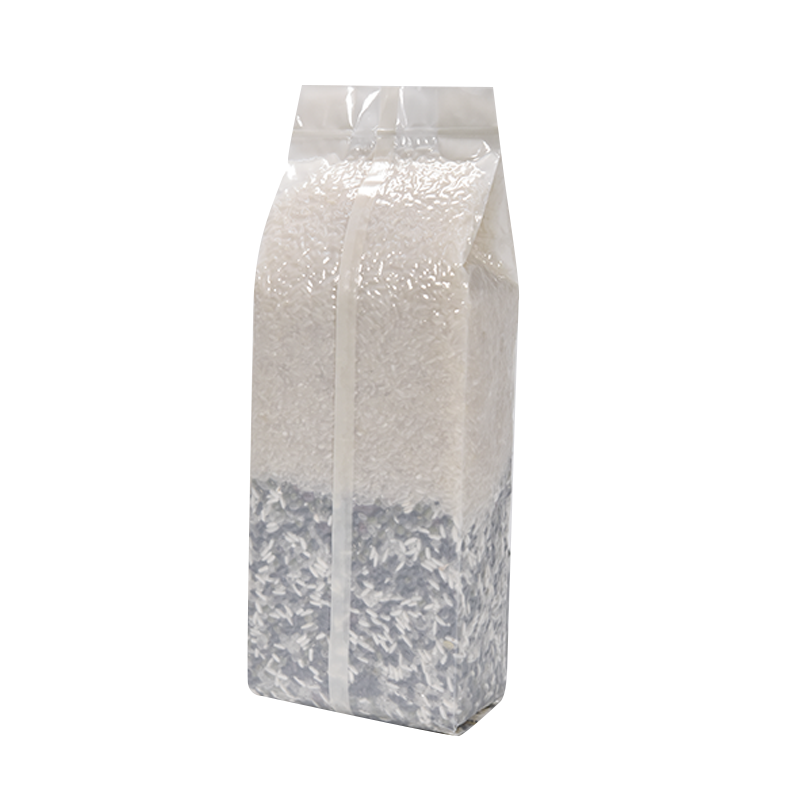How Biodegradable Vacuum Bags Revolutionize Food Safety and Hygiene Standards
In today’s fast-paced world, where food safety and hygiene are non-negotiable priorities, the demand for advanced packaging solutions is skyrocketing. Enter biodegradable vacuum bags —a game-changing innovation that not only preserves product integrity but also aligns with eco-conscious values. These sustainable alternatives to traditional plastic packaging have become indispensable in industries like food processing, pharmaceuticals, and beyond. Let’s dive into how these biodegradable options elevate safety standards while addressing modern challenges.
When it comes to packaging raw meat, seafood, or dairy products, contamination risks are a major concern. Traditional vacuum-sealed bags often excel at keeping oxygen out, but they fall short in terms of environmental responsibility. This is where biodegradable vacuum-sealed bags shine. Designed with superior barrier properties, they effectively block oxygen, moisture, and light, ensuring that perishable items remain fresh for longer periods. For instance, when used in high-risk environments such as meat processing plants, these bags prevent microbial growth by creating an airtight seal. Moreover, their anti-static properties make them ideal for sensitive applications, reducing the risk of contamination during handling. By choosing biodegradable options, businesses can maintain rigorous hygiene standards without compromising on sustainability—a win-win scenario.
But what about freezing or reheating food stored in these eco-friendly bags? One might wonder if the biodegradability of the material affects its performance under extreme temperatures. Rest assured, manufacturers have addressed this concern by engineering materials like PLA, PBAT, and PET blends that withstand both freezing and moderate heating. While these bags may not be suitable for high-temperature cooking methods like boiling, they perform exceptionally well in standard freezer conditions and microwave-safe scenarios. This versatility makes them a reliable choice for frozen food manufacturers and home users alike. Plus, their ability to degrade naturally after use ensures that they don’t contribute to landfill waste, unlike conventional plastics.

The pharmaceutical industry is another sector where biodegradable vacuum packaging is making waves. Medications and supplements often require protection from light, moisture, and air to maintain efficacy. Here, biodegradable vacuum bags step up to the plate with their exceptional light-blocking and moisture-proof capabilities. Imagine storing temperature-sensitive drugs or vitamins in packaging that not only safeguards their quality but also aligns with global sustainability goals. It’s no wonder that more pharmaceutical companies are adopting these innovative solutions to meet regulatory standards while enhancing their brand image. The integration of biodegradable materials into medical packaging represents a significant leap forward in responsible manufacturing practices.
Of course, the adoption of biodegradable vacuum-sealed bags isn’t just about functionality—it’s also about perception. Consumers today are increasingly aware of the environmental impact of their purchasing decisions. Brands that prioritize eco-friendly packaging, such as biodegradable vacuum bags, stand to gain a competitive edge. Studies show that shoppers are willing to pay a premium for products packaged in sustainable materials, especially when those materials deliver on performance. By leveraging this trend, businesses can build trust and loyalty among environmentally conscious customers. Whether you’re a food producer looking to extend shelf life or a pharmaceutical company aiming to protect sensitive products, these bags offer a compelling solution that ticks all the boxes.
In conclusion, biodegradable vacuum bags represent the future of safe, hygienic, and sustainable packaging. Their ability to preserve freshness, block contaminants, and degrade naturally sets them apart from traditional options. From food safety in high-risk environments to protecting pharmaceuticals and appealing to eco-aware consumers, these bags are proving their worth across multiple industries. As businesses continue to seek ways to balance performance with environmental responsibility, the adoption of biodegradable vacuum-sealed solutions will undoubtedly grow. So why wait? Make the switch today and discover how these innovative bags can transform your operations while contributing to a greener planet.

prevNo previous article
nextIs Your Anti-Static Wrapping Film Truly Sustainable? Exploring Eco-Friendly Manufacturing Practices



 English
English 中文简体
中文简体 Español
Español
















